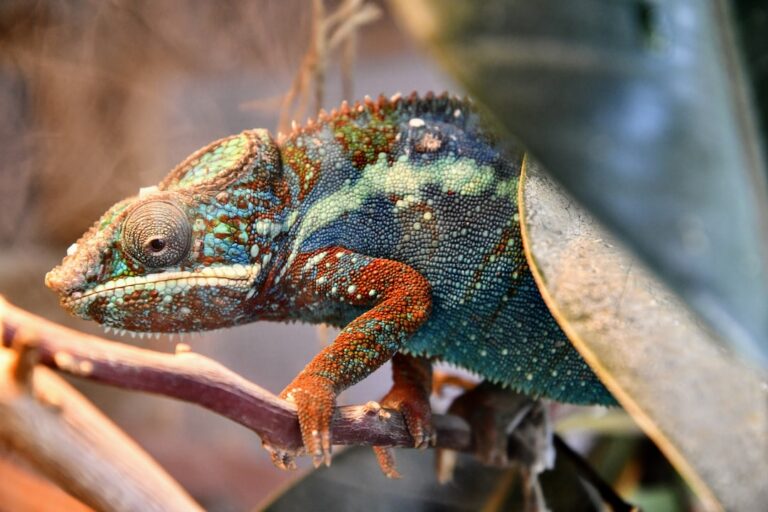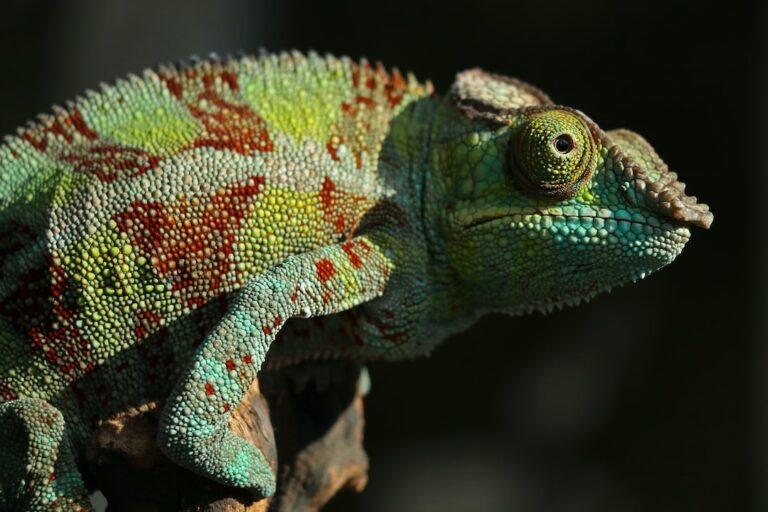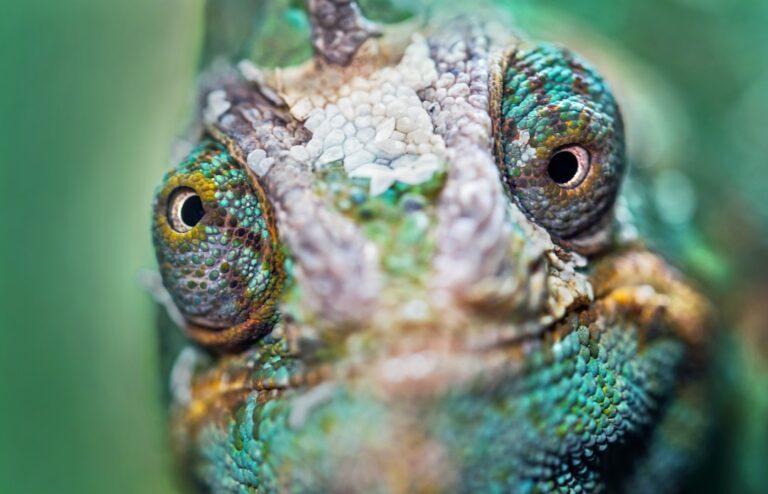Why Do Chameleons Eat Dirt?
Chameleons are fascinating creatures that are known for their unique ability to change color and blend into their surroundings. They belong to the family Chamaeleonidae and are native to Africa, Madagascar, and parts of southern Europe, Asia, and the Middle East. Chameleons have a distinctive appearance with their bulging eyes, long tongues, and prehensile tails. They come in a variety of colors and patterns, which they can change to communicate with other chameleons or to camouflage themselves from predators.
Table of Contents
What is Geophagy?
Geophagy is the act of eating dirt or soil. While it may seem strange to us humans, geophagy is actually quite common in the animal kingdom. Many animals, including birds, mammals, reptiles, and insects, engage in geophagy for various reasons. Some animals eat dirt as a source of minerals and nutrients that may be lacking in their diet, while others use it as a way to detoxify their bodies or to aid in digestion.
The Reasons Behind Chameleons Eating Dirt
Chameleons are known to engage in geophagy, but the reasons behind this behavior are not fully understood. There are several theories that attempt to explain why chameleons eat dirt. One theory suggests that chameleons eat dirt as a way to supplement their diet with essential minerals and nutrients that may be lacking in their natural environment. Another theory proposes that chameleons eat dirt to aid in digestion by providing roughage or grit that helps break down food in their stomachs.
Nutritional Benefits of Dirt for Chameleons
Dirt contains a variety of minerals and nutrients that can be beneficial for chameleons. For example, soil may contain calcium, which is important for bone health and egg production in female chameleons. It may also contain trace minerals such as iron, zinc, and magnesium, which are essential for various physiological processes in chameleons. Additionally, dirt may contain beneficial bacteria and microorganisms that aid in digestion and promote a healthy gut flora.
Role of Dirt in Digestion of Chameleons
Dirt plays a crucial role in the digestion of chameleons. Chameleons have a unique digestive system that requires the presence of roughage or grit to help break down food in their stomachs. The roughage acts as an abrasive material that helps grind up food particles, aiding in the mechanical digestion process. Without the presence of dirt or other sources of roughage, chameleons may struggle to properly digest their food, leading to digestive issues and nutrient deficiencies.
How Chameleons Use Dirt to Regulate their Body Temperature
In addition to its role in digestion, dirt also plays a role in regulating the body temperature of chameleons. Chameleons are ectothermic animals, which means they rely on external sources of heat to regulate their body temperature. By basking in the sun on patches of warm dirt, chameleons can absorb heat and raise their body temperature. Conversely, by burrowing into cool dirt or hiding in shaded areas, chameleons can lower their body temperature and avoid overheating.
The Importance of Dirt for Maintaining Chameleons’ Health
Dirt is essential for maintaining the overall health and well-being of chameleons. It provides them with essential minerals and nutrients that may be lacking in their diet, aids in digestion by providing roughage, and helps regulate their body temperature. Depriving chameleons of dirt can have serious consequences for their health. Without access to dirt, chameleons may develop nutrient deficiencies, digestive issues, and struggle to regulate their body temperature, which can lead to a weakened immune system and increased susceptibility to disease.
How Chameleons Choose the Right Dirt to Eat
Chameleons have the ability to select the right dirt to eat based on their nutritional needs. They are able to detect the presence of minerals and nutrients in the soil through their sense of smell and taste. Chameleons may also be influenced by the texture and moisture content of the soil when choosing what to eat. They may prefer soil that is rich in minerals and nutrients, moist, and has a certain texture that aids in digestion.
Potential Risks of Chameleons Eating Dirt
While geophagy is a natural behavior for chameleons, there are potential risks associated with eating dirt. One risk is the ingestion of harmful substances or toxins that may be present in the soil, such as pesticides or heavy metals. Another risk is the ingestion of parasites or pathogens that may be present in the soil, which can lead to infections or diseases. To minimize these risks, it is important to provide chameleons with clean, pesticide-free soil and to regularly monitor their health for any signs of illness.
The Fascinating World of Chameleons and their Unique Dietary Habits
Chameleons are truly remarkable creatures with unique dietary habits. Their geophagy behavior serves multiple purposes, including supplementing their diet with essential minerals and nutrients, aiding in digestion, and regulating their body temperature. Understanding and providing for these dietary needs is crucial for maintaining the health and well-being of chameleons in captivity. By providing them with access to clean, nutrient-rich soil, chameleon owners can help ensure that their pets thrive and live long, healthy lives.
If you’re curious about the unique behaviors of reptiles, you might also be interested in an article titled “Why Do Chameleons Eyes Rotate?” This fascinating piece explores the incredible ability of chameleons to move their eyes independently, allowing them to have a 360-degree field of vision. Discover the reasons behind this remarkable adaptation and how it helps chameleons survive in their natural habitats. To learn more about this intriguing topic, check out the article here.







